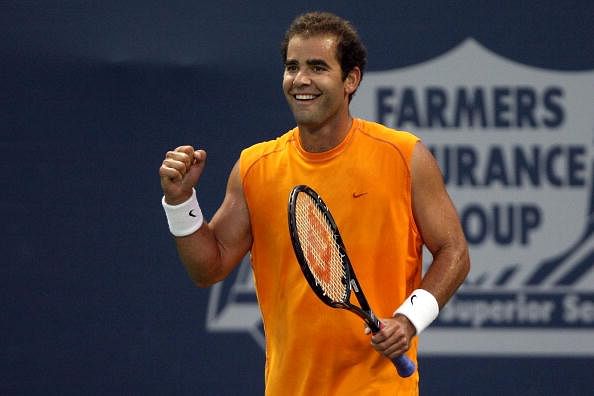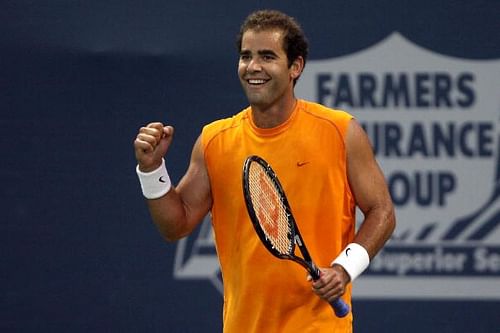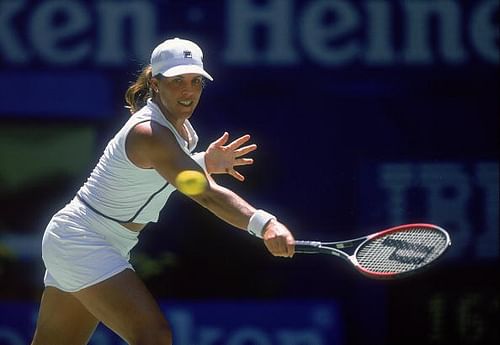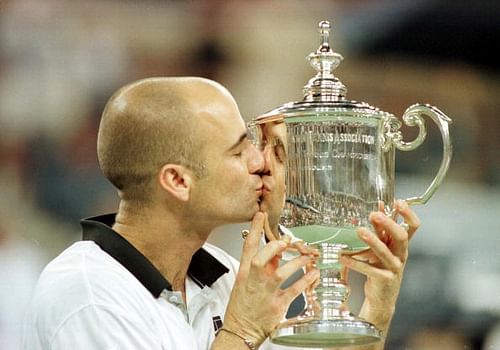
Successful career comebacks that changed tennis
Known for its demanding schedule, the ATP tour can easily wear down even the most mentally and physically fit athletes. For instance, Bjorn Borg, the renowned Swede, lost his will to compete after years of strenuous play and retired at the age of 26, while still at the height of his powers. Likewise, the King of Clay, Rafael Nadal, has had to take three breaks from the tour in the past eight years, to nurse tennis related injuries. In Nadal’s words, playing on hardcourts, the most common surface in tennis, is like “playing football on cement.” However, a few elite tennis players rose above adversities to become better players. This article will identify seven such athletes who made amazing comebacks against the odds.
7. Pete Sampras

After winning a record seven Wimbledon titles in 2000 and beating Roy Emerson’s Grand Slam record, Sampras, the then “Greatest of All Time,” started to lose motivation on tour. In 2001 and 2002, Sampras could not even make it past the fourth round at Wimbledon, his most prolific tournament. Reporters and critics lamented Sampras’s demise, because he had not won a single tournament since 2000. Determined to not fade out this way, at the 2002 US Open, the King of Swing turned on his game in dramatic fashion to win emotional matches over younger players such as Tommy Haas and future US Open winner, Andy Roddick. Interestingly, Sampras battled four emotional sets with Andre Agassi, his first US Open final opponent, to set the Grand Slam record of 14 – a fitting swansong for the man who changed the game.
6. Monica Seles
In the early 1990s, the era of Steffi Graf’s dominance in tennis, Monica Seles fought her way to become the youngest female French Open champion, in the process unseating Graf from the top. By 1993, she had already won 7 Grand Slam singles titles. Everything looked well for Seles until a career-changing incident. At Hamburg, Germany, Seles was stabbed by a Graf fan; the lunatic wanted to help Graf return to the top of the women’s game. As a result, Graf regained her former number 1 ranking, while Seles took over 2 years to recuperate. When she returned to tennis, Seles was clearly not the same. However, she continued to play for a decade before retiring in 2003. On her journey, Seles won an additional Grand Slam at the Australian Open in 1996 and competed in three more Grand Slam finals.
5. Jimmy Connors
Connors, the ambassador of American tennis, played on tour well into his late 30s. Older players have difficulty keeping up with the younger generation. In 1991, when most were writing off Connors, the all-time great made one last historical run at the US Open. At the “ancient” age of 39 years old, Connors fought his way to the US Open semifinals by defeating a much younger John McEnroe and Aaron Krickstein in 5-set thrillers before losing to Jim Courier, who won the Australian and French Opens that year. Connors’ victories inspired a generation of great athletes who would pass on his tale.
4. Jennifer Capriati

Jennifer Capriati’s career path was like a roller-coaster. While famous for being the youngest player to ever reach a Grand Slam semifinal, Capriati suffered in reputation and rankings after becoming a drug addict and a shoplifter. After rehabilitation she became committed to tennis once again, and she trained hard to rise in the ranks from below top 200 in 1998 to the top 10 in 2000. She surprised the world by winning the Australian Open in 2001 and 2002 and the French Open in 2001 to obtain the world number 1 ranking. Capriati showed the world that it is never too late to correct a mistake.
3. Rafael Nadal
Rafael Nadal, the best clay player to ever hold a racket, has suffered many setbacks that jeopardized his career. Relentless and passionate on court, Nadal’s athleticism and determination enabled him to win the French Open 7 times out of 8. His defensive style, however, damaged his body. In 2005 and 2009, Nadal had to take time off the tour to recover and deal with injuries, including tendinitis in his left knee. After some time off, Nadal shocked the tennis world by playing ever more competitively. Returning to the game in 2005, Nadal reached his very first Wimbledon final to become a dominant player on non-clay surfaces. Similarly, after missing half of the season in 2009, Nadal won Wimbledon, the French and the US Open in 2010. Having recently returned from yet another recuperation period, Nadal will play his favourite clay tournaments in the upcoming months.
2. Serena Williams
Serena Williams’s incredible career so far has featured many amazing feats such as the Serena Slam (holding all four Grand Slams at once) and the career Golden Slam (Olympics gold plus career Grand Slam). The current world number 3, however, has also been very injury-prone. In 2010, Williams had to take 11 months off because of a foot injury. Her first few months after returning to the world of tennis were not glamorous, and included a first round exit at the 2012 French Open. Williams, already in her 30s, stepped up her game and honed her deadly weapons (mainly, the serve and forehand). The past summer and fall, Williams won Wimbledon, the London Olympics, the US Open and the season-ending Championships. In other words, Williams has again become a dominant force, winning most of the important tournaments in 2012. This feat is even more incredible because Williams is a 31-year-old veteran, who should be slowing down. Williams’s story proves that determination and hard work can produce wonders.
1. Andre Agassi

The arch rival of Pete Sampras, Andre Agassi had a very distinct and dramatic career. In 1997, the fashion icon and playboy divorced his wife and developed an addiction to crystal meth. His ranking, consequently, fell out of the top 100. Determined to re-establish himself, Agassi started all over at the bottom. He refused to enter big tournaments as a wildcard and started playing in the Challenger Series. The multiple Grand Slam champion entered several second-tier tournaments, where he had to pick up balls by himself.
His efforts to restart his tennis career, however, proved to be effective. By 1999, Agassi had completed his career Golden Slam by winning his first French Open title. Agassi redefined the term “old” and fought his way back to the 2005 US Open final aged 35 years old (outrageous in the tennis world) by defeating players almost half his age. At the age of 36, the ‘Punisher’ retired after winning 4 more Grand Slam titles and fighting his way to 3 more finals.
What have these players proved?
These all-time greats all overcame emotional and physical challenges. Their stories taught the world that injuries can heal and that age is just a number. Nothing is impossible if one has dedication and spirit.